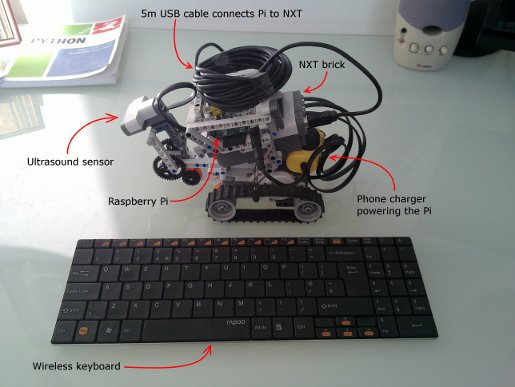Continuing on with examples of teaming up the NXT with other computing device (Android, Android, Sifteos) is this great project using the Raspberry-Pi
Using the Raspberry-Pi and some Python scripts, David Llewellyn-Jones from LJMU was able to control his robot from a wireless keyboard.
The keyboard talks to the Raspberry-Pi, which in turn sends Bluetooth Commands to the NXT with instructions on how it should move. The NXT can also send sensor readings back to the Pi, which means you can do some serious computational work without the need for an external PC.
As David says,
(via Dexter Industries - http://dexterindustries.com/blog/2012/08/01/raspberry-pi-and-the-lego-mindstorms-nxt/)
Using the Raspberry-Pi and some Python scripts, David Llewellyn-Jones from LJMU was able to control his robot from a wireless keyboard.
The keyboard talks to the Raspberry-Pi, which in turn sends Bluetooth Commands to the NXT with instructions on how it should move. The NXT can also send sensor readings back to the Pi, which means you can do some serious computational work without the need for an external PC.
As David says,
The wonderful thing about all of this is that although it requires a huge amount of effort and insight to get each of the individual pieces working, none of the effort was mine. Pulling the pieces together is really straightforward, building on so much clever work by so many people. It's got to the stage where you can grab a phone charger, some Lego, a £35 PC the size of a credit card, a wireless keyboard, an entirely open source software stack, 5m of USB cable and a Sunday afternoon and end up with a complete robot you can programme directly in Python. Brilliant.More info here - http://www.flypig.co.uk/?page=list&list_id=363&list=blog
(via Dexter Industries - http://dexterindustries.com/blog/2012/08/01/raspberry-pi-and-the-lego-mindstorms-nxt/)
